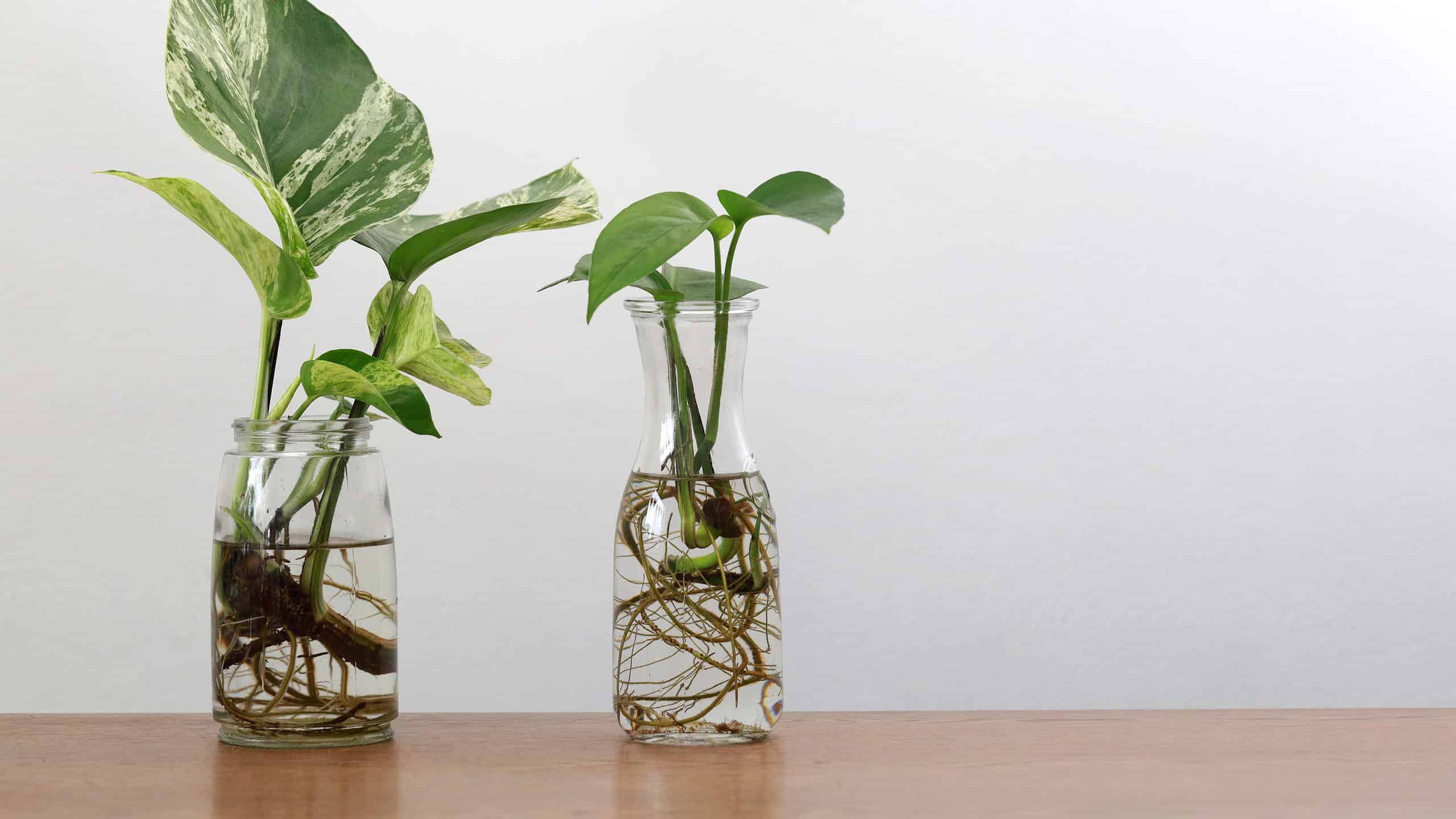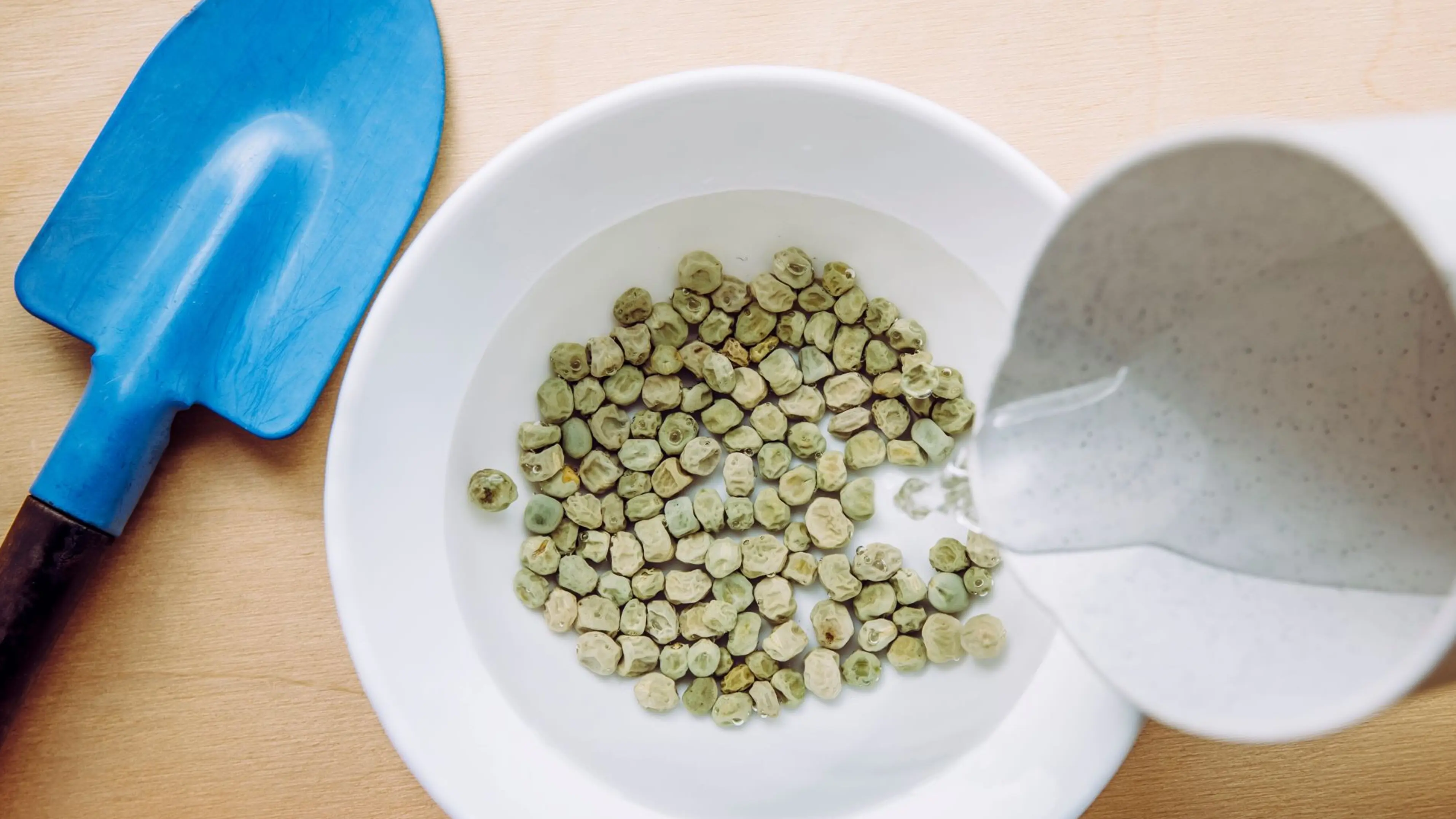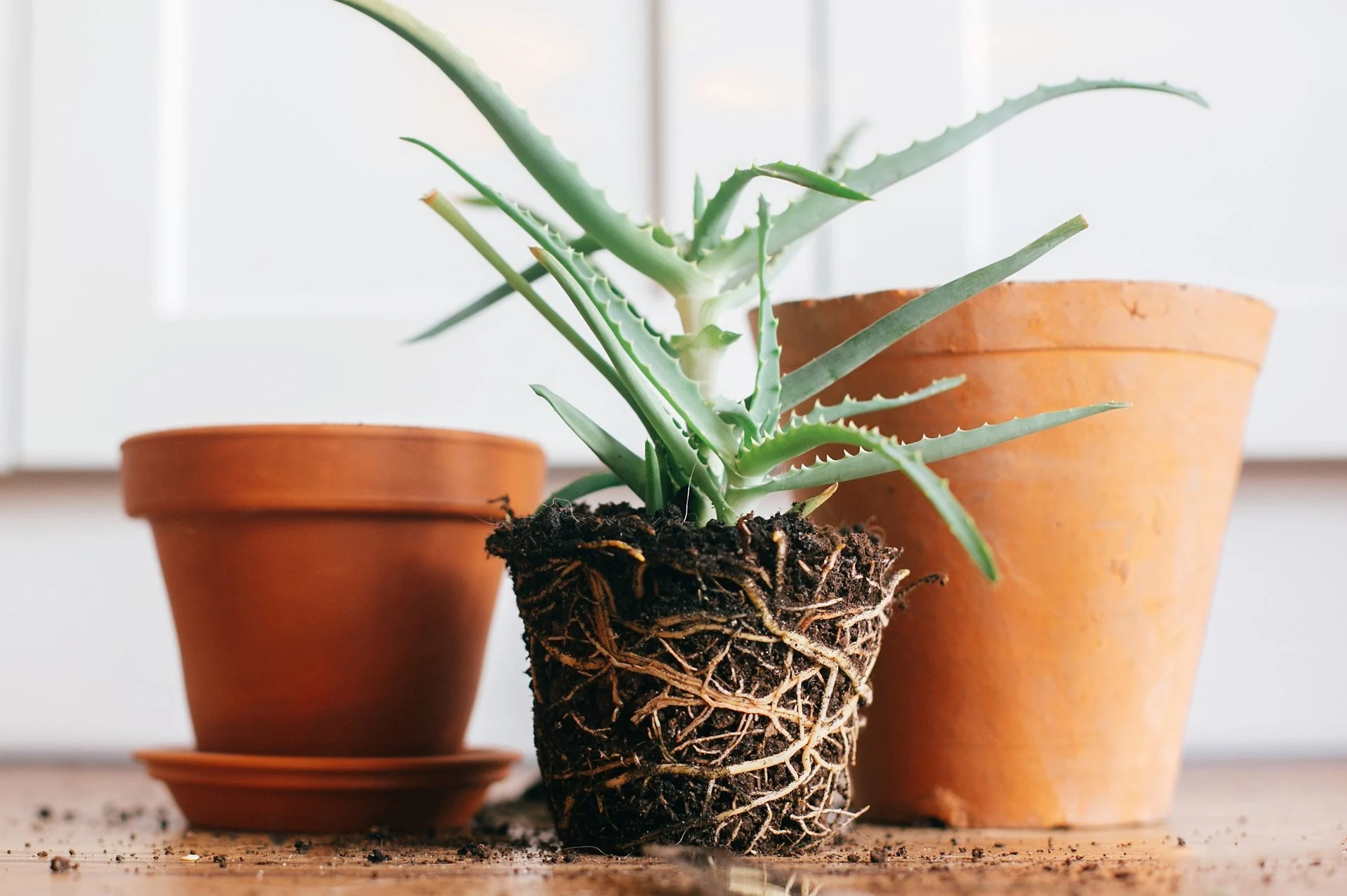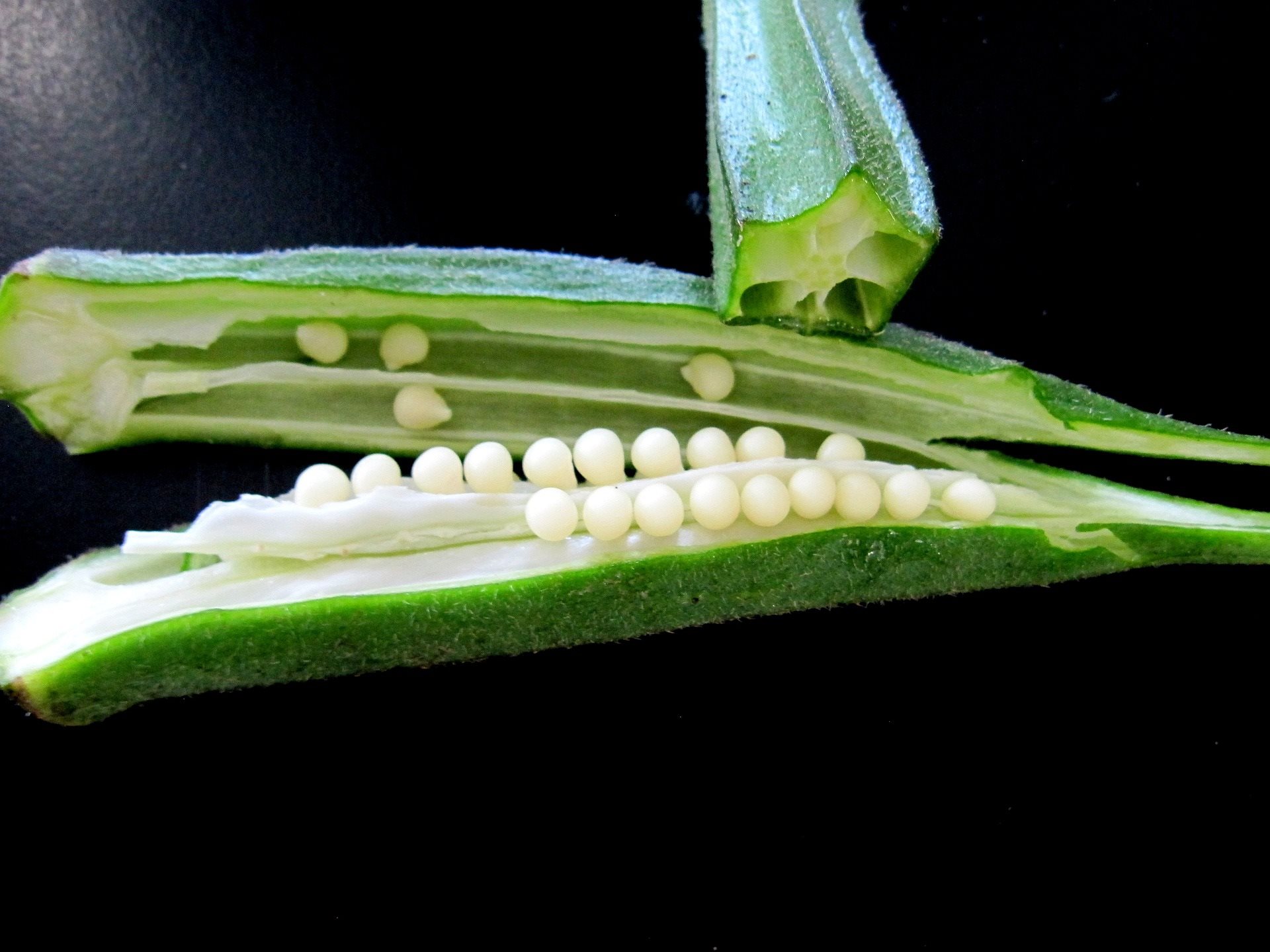Home>Types of Gardening>Ornamental Gardening>How Long Should Pothos Roots Be Before Planting


Ornamental Gardening
How Long Should Pothos Roots Be Before Planting
Modified: February 7, 2024
Learn how long pothos roots should be before planting in this comprehensive guide for ornamental gardening.
(Many of the links in this article redirect to a specific reviewed product. Your purchase of these products through affiliate links helps to generate commission for Chicagolandgardening.com, at no extra cost. Learn more)
Table of Contents
Introduction
Welcome to the enchanting world of ornamental gardening! If you have a green thumb and a love for intricate beauty, then ornamental gardening is the perfect hobby for you. One of the most beloved plants among gardeners is the pothos, with its lush foliage and trailing vines that add a touch of elegance to any space. But before you dive into the world of pothos gardening, it’s important to understand the significance of healthy roots and how they contribute to the overall well-being of your plants.
The roots of a plant play a vital role in its survival and growth. They anchor the plant in the soil, absorb water and nutrients, and store food reserves for future use. Healthy roots are essential for a plant to thrive and reach its full potential. When it comes to pothos, understanding the ideal length for their roots is crucial for successful planting and maintenance.
In this article, we will delve into the fascinating world of pothos roots and explore the factors that determine their length. We will also discuss how to measure their length and when it’s appropriate to plant pothos with long roots. Additionally, we will provide insights on when to trim pothos roots to ensure the health and vitality of your plants.
So, let’s roll up our sleeves and embark on this journey to discover the wonders of pothos roots and how they contribute to the beauty of ornamental gardening.
Importance of Healthy Roots
Healthy roots are the foundation of a thriving plant. They serve as the lifeline for your pothos, providing necessary water, nutrients, and support. Let’s explore the importance of healthy roots in more detail:
Water and Nutrient Absorption: The primary function of roots is to absorb water and essential nutrients from the soil. Healthy roots have the ability to absorb water efficiently, ensuring that your pothos receives an adequate water supply. The nutrients absorbed by the roots are vital for the plant’s growth, development, and overall health.
Plant Stability: Healthy roots anchor your pothos securely in the soil, offering stability and preventing the plant from toppling over. This is especially important for trailing or vining plants like pothos, as they rely on their roots to stay upright and maintain a graceful appearance.
Food Storage: The roots of a pothos plant also act as a storage facility for food reserves. These reserves help sustain the plant during periods of stress, such as drought or low light conditions. When your pothos has healthy and robust roots, it can effectively store enough food to withstand temporary unfavorable conditions.
Root Health = Leaf Health: It’s important to remember that the health of your pothos roots directly impacts the health of its leaves. If the roots are weak or diseased, the plant will struggle to absorb nutrients, leading to stunted growth and lackluster foliage. By ensuring the roots are healthy, you are setting the stage for vibrant and lush leaves.
Disease Resistance: Healthy roots are more resistant to diseases and pests. They have a better ability to fight off infections and form a protective barrier against harmful pathogens. Robust roots contribute to the overall plant resistance, reducing the risk of diseases that can harm your beloved pothos.
Acknowledging the significance of healthy roots is crucial to the success of your pothos gardening endeavors. By providing optimal conditions and care, you can pave the way for your plant to thrive and flourish.
Understanding Pothos Roots
To truly appreciate the importance of root health, it is essential to understand the characteristics and behavior of pothos roots. Here’s what you need to know about pothos roots:
Adventitious Roots: Pothos plants have adventitious roots, which means they can grow from any part of the stem, not just from the main root system. These roots are essential for the plant’s ability to propagate and establish itself in various environments. When taking cuttings or propagating pothos, these adventitious roots are what allow new plants to develop and thrive.
Aerial Roots: A unique feature of pothos is the presence of aerial roots. These roots have a velvety appearance and originate from the nodes along the vine. Aerial roots naturally seek out surfaces for support and can attach themselves to objects like trees or walls. While pothos can thrive without attaching to anything, providing support for these aerial roots can enhance the plant’s overall aesthetic appeal.
Variety in Root Length: Pothos roots can vary in length depending on their age, health, and growing conditions. Newer, younger roots tend to be shorter and thinner, while older roots can grow significantly longer and thicker. As the plant matures, it will develop a network of roots that expand and spread throughout the pot or soil.
Root Color and Texture: Pothos roots typically have a pale or white coloration, although some varieties may exhibit a slight reddish or brownish tint. The texture of the roots can range from smooth to slightly rough. It’s essential to inspect the roots periodically for any signs of discoloration or damage, as this can indicate potential issues with root health.
Root Growth and Direction: Pothos roots exhibit a strong growth pattern that is influenced by gravity. The roots naturally grow downwards, seeking moisture and nutrients in the soil. However, when a pothos plant is grown in a hanging or elevated position, the aerial roots may also grow upwards, towards the light source. Understanding this growth behavior can help you provide the best support and care for your pothos.
By familiarizing yourself with the unique characteristics of pothos roots, you can better understand their needs and provide appropriate care. Nurture and support the roots, and your pothos plant will reward you with its stunning foliage and graceful growth.
Ideal Length for Pothos Roots
When it comes to the ideal length for pothos roots, there is no specific measurement that applies universally. The length of pothos roots can vary depending on several factors, including the plant’s age, growing conditions, and the size of the container or planting space. However, there are some general guidelines to keep in mind:
Established Plants: For well-established pothos plants that have been growing for a while, it is common to have longer roots. These roots can extend several inches or even a foot in length, exploring the soil or container in search of water and nutrients. Longer roots indicate a healthy and robust root system, which is essential for the plant’s overall vigor.
New Plants or Cuttings: When propagating pothos from cuttings or starting with a fresh plant, the roots will initially be shorter as they are just beginning to develop. It is important to provide adequate care and optimize growing conditions to encourage root growth. As the plant acclimates and establishes itself, the roots will gradually grow longer and stronger.
Container Size: The size of the container or pot can also influence the length of the pothos roots. In smaller containers, the roots may be more constricted and have limited room for expansion, resulting in shorter root lengths. On the other hand, plants grown in larger containers or directly in the ground will have more space for root growth, allowing them to develop longer and more extensive root systems.
Balance is Key: While having longer roots is generally beneficial, it’s important to strike a balance. Extremely long roots that become tightly wound or overcrowded in the container can indicate that it’s time to repot the plant into a larger-sized container. This will provide the roots with more room to spread and grow, ensuring optimal nutrient uptake and water absorption.
Ultimately, the ideal length for pothos roots is a relative concept. It varies depending on the specific circumstances and the stage of growth for the plant. By observing the health and behavior of the roots, you can gauge their length and make informed decisions on how to care for your pothos plant.
Factors Affecting Root Length
The length of pothos roots is influenced by various factors that contribute to the overall growth and development of the plant. Understanding these factors can help you create optimal conditions for your pothos and ensure healthy root growth. Here are some key factors that can affect root length:
Growing Environment: The environment in which the pothos is grown plays a significant role in determining root length. Factors such as temperature, humidity levels, and light intensity can impact the rate of root growth. Providing a suitable environment with consistent temperatures, moderate humidity, and adequate light can encourage longer and healthier root development.
Soil Quality and Texture: The quality and texture of the soil or growing medium directly influence root growth. Well-draining soil that retains moisture while allowing excess water to pass through is ideal for pothos roots. Loose and loamy soil or a well-balanced potting mix provides ample oxygen to the roots, promoting their growth. Avoid compacted or heavy soils that hinder root expansion.
Nutrient Availability: The availability of essential nutrients in the soil is crucial for root development. Pothos plants require a balanced supply of nutrients, including nitrogen, phosphorus, and potassium, along with micronutrients. Insufficient or imbalanced nutrition can negatively impact root growth. Providing regular fertilization with a suitable plant food can help ensure that your pothos receives adequate nutrients for robust root development.
Watering Practices: Proper watering practices are vital for root length and health. Overwatering or underwatering can have negative effects on root growth and lead to root rot or drought stress. It is essential to water your pothos thoroughly and allow the soil to partially dry out before watering again. This encourages the roots to grow longer in search of moisture while preventing waterlogged conditions that can suffocate the roots.
Pot Size and Placement: The size of the pot or container in which the pothos is planted can affect root length. Larger pots provide more room for root expansion, allowing them to grow longer and stronger. Additionally, placing the pothos in a well-sized pot with proper drainage holes ensures optimal airflow and prevents root suffocation. Adequate spacing and avoiding overcrowding of plants also contribute to healthier root systems.
Genetic Factors: It’s worth mentioning that the genetic makeup of the pothos plant itself can influence root length. Different varieties of pothos may exhibit varying root growth characteristics. Some varieties may naturally have longer root systems, while others may have shorter roots but compensate with denser root networks.
By considering these factors and providing optimal growing conditions, you can encourage the development of longer and healthier roots for your pothos plant, ensuring its vitality and overall well-being.
How to Measure Pothos Root Length
Measuring the length of pothos roots can provide valuable information about the plant’s health and growth. While it may seem like a challenging task, it can be easily accomplished with a few simple steps. Here’s how you can measure pothos root length:
Step 1: Prepare the Plant: Start by gently removing the pothos plant from its pot or carefully excavating the soil around the roots if it is planted directly in the ground. Be cautious not to damage or break the delicate roots during this process.
Step 2: Clear the Soil: Gently brush away any excess soil clinging to the roots. This will help you clearly see and measure the length of the roots without any obstructions.
Step 3: Begin Measuring: Take a ruler or measuring tape and select a starting point to measure the length of the roots. You can choose to start from the base of the stem or the point where the roots emerge from the plant. Place the measuring device alongside the roots and extend it along the length of the longest root.
Step 4: Take Multiple Measurements: To obtain an accurate measurement, it is recommended to measure multiple roots rather than relying on a single measurement. This will give you a better understanding of the average root length and the overall health of the root system.
Step 5: Record the Measurements: As you measure each root, record the length in a notebook or on a piece of paper. Note down any observations or abnormalities you may observe during the process as this information can be valuable for diagnosing potential issues or monitoring the root system’s progress over time.
Step 6: Calculate Average Root Length: Once you have measured all the relevant roots, calculate the average root length by adding up the individual measurements and dividing the total by the number of roots measured. This average measurement can give you a good indication of the overall root length and health of your pothos plant.
Measuring the length of your pothos roots can be a rewarding experience as you gain insights into the plant’s growth and root development. It not only allows you to track the progress of your plant but also aids in identifying any potential issues that may arise. So, grab your ruler and get ready to connect with your pothos on a deeper level!
When to Plant Pothos with Long Roots
Planting pothos with long roots is a critical step to ensure their successful growth and establishment. While it is generally recommended to plant pothos when their roots are not excessively long, there are certain situations where you can safely plant pothos with longer roots. Here are some guidelines to consider:
Established Root System: When pothos plants have a well-developed and healthy root system, typically seen in mature plants that have been growing for a while, it is safe to plant them even if the roots are longer. These longer roots indicate that the plant has been actively absorbing nutrients and water, and should easily adapt to their new planting location.
Transplanting from Larger Pots: If you are transitioning a pothos plant from a larger pot to a smaller one, planting it with longer roots might be necessary. In this situation, carefully trim the excessively long roots to a manageable length before planting. Be cautious not to remove too much of the root structure, as this can hinder the plant’s ability to absorb water and nutrients.
Root Training: Some gardeners intentionally allow pothos roots to grow longer to create visually appealing cascading or hanging displays. If you have been training your pothos with longer roots, you can plant them with these extended roots to maintain the desired aesthetic appeal. Just ensure that the roots are healthy and not tangled or crowded in the container to prevent any potential issues.
Stabilizing Weak Plants: For pothos plants that may be weak or struggling due to inadequate root development or other factors, planting them with longer roots can provide additional support and stability. The longer roots can anchor the plant more securely in the soil, assisting in its recovery and promoting healthier growth.
It’s important to note that when planting pothos with longer roots, proper care and acclimatization are crucial. Make sure the planting site provides the appropriate light conditions and well-draining soil. Water the plant thoroughly after planting and continue regular watering as needed.
Remember that while pothos plants can tolerate longer roots during planting, excessively long and tangled roots may benefit from careful pruning for optimal root health. Trimming these roots can encourage the plant to develop new, healthier roots that will support its growth and vitality.
By understanding the circumstances where planting pothos with longer roots is suitable, you can confidently make decisions that contribute to the successful growth and thriving of your pothos plants.
When to Trim Pothos Roots
Trimming pothos roots is a crucial aspect of plant care and maintenance, as it promotes healthy root growth and prevents potential issues. While pothos roots generally do not require frequent trimming, there are specific situations where trimming becomes necessary. Here are the guidelines for when to trim pothos roots:
Root Bound Plants: Pothos plants that have become root bound, with roots tightly circling the pot or becoming tangled, may need root trimming. When the roots are severely overcrowded, they can hinder nutrient absorption and water uptake, affecting the plant’s overall health. Trimming the excessively long and tangled roots allows the plant to develop new, healthier roots and alleviate the stress caused by overcrowding.
Repotting: When repotting a pothos plant, it is common to trim the roots to ensure a healthy transition to a new container. Trimming the roots allows for better root growth and prevents the plant from becoming root bound in the new pot. Carefully trim any excessively long or damaged roots before placing the plant in its new pot with fresh soil.
Root Rot or Disease: Trimming pothos roots affected by root rot or other diseases is crucial to prevent the spread of infection. If you notice dark, soft, or mushy roots, this may indicate root rot. Trim off the infected roots and discard them to prevent further damage. Take care to clean and sterilize your tools to avoid spreading any disease-causing pathogens to other plants.
Aesthetics and Maintenance: Occasionally, pothos plants with long and trailing roots may require trimming for aesthetic purposes or to maintain their desired shape. Trimming the roots helps manage the length and prevent them from becoming tangled or overgrown. It can also promote a more compact and aesthetically appealing appearance, especially for hanging or cascading pothos plant arrangements.
Root Pruning during Propagation: When propagating pothos through cuttings, root pruning can be beneficial to stimulate root growth. Trimming the ends of the roots, or making small incisions or slits along the bottom of the cutting, encourages the development of new roots. This practice helps the cutting establish itself quickly and ensures a healthy root system for future growth.
Note that when trimming pothos roots, it is essential to use clean and sharp tools to avoid causing unnecessary damage to the plant. Cleanse your tools with rubbing alcohol or a mild bleach solution before and after use to minimize the risk of introducing pathogens.
Trimming pothos roots should be done with care and consideration. Aim to strike a balance between maintaining a healthy root system that supports the plant’s growth while avoiding excessive root removal that may impede nutrient uptake. By following these guidelines, you can maintain the vitality and beauty of your pothos plants.
Conclusion
Ornamental gardening can be both a delightful and rewarding experience, and understanding the importance of healthy roots is crucial in nurturing your pothos plants successfully. Healthy roots are essential for water and nutrient absorption, providing stability to the plant, and acting as a storage facility for food reserves. By promoting root health, you are directly contributing to the overall well-being and vitality of your pothos plants.
Through a deeper understanding of pothos roots, you can make informed decisions about their care. While there is no universal ideal length for pothos roots, observing their characteristics, such as their color, texture, and growth patterns, can provide insights into the health and development of your plant.
Factors like the growing environment, soil quality, nutrient availability, watering practices, and pot size can all impact the length and health of pothos roots. By creating optimal conditions and providing appropriate care, you can encourage the growth of longer and healthier roots.
Measuring pothos root length can be a valuable tool in monitoring plant health and growth progress. By measuring multiple roots and tracking the average length, you can gain a better understanding of root development and make necessary adjustments to ensure the plant’s well-being.
Knowing when to plant pothos with longer roots and when to trim them is important for maintaining a healthy root system. Planting pothos with longer roots is possible in established plants, during transplanting, or for aesthetic reasons. Trimming roots may be necessary in cases of overcrowding, root rot, or to shape and maintain the plant’s appearance.
In conclusion, healthy roots are the key to thriving pothos plants. By understanding the characteristics, factors influencing their growth, and best practices for measuring and trimming, you can cultivate successful and flourishing pothos plants, adding natural beauty and charm to your ornamental garden.










